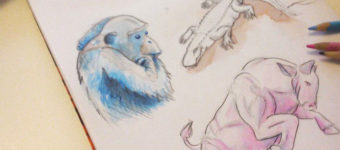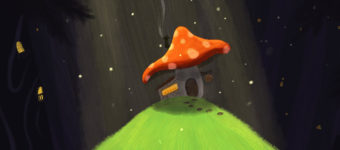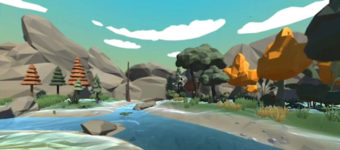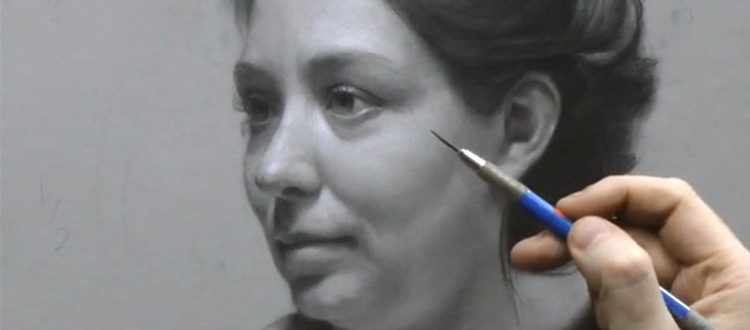
Review: Vitruvian Studio Portrait Drawing Online Course
“Successful portraits are the product of a sound method. Good results come from good decisions. Good decisions come in part from knowing what to do, what to look for, and in what sequence.”
We’re continuing our series on Vitruvian Studios’s drawing courses with another one of their great learning resources: Portrait Drawing – The Complete Online Course.
If you’re interested in portrait drawing or realism at all, this is a course you’ll want to check out.
Check Out Vitruvian Portrait Drawing
Course Background
This course is a direct continuation of the first one and is based on all the fundamentals taught in it.
As such, it’s hard to come up with new things to say about it. All of the basics and background information are the same.
It’s taught by the same guy: David Jamieson.
His qualifications are still the same. Last I checked, the New York Academy of Art has not rescinded his MFA, he’s still formerly a professor, and Prince Charles has not sold his art.
The course itself is taught in the same methodical manner as the last one. It’s still exhaustively detailed, with nothing cut out. The production values are still good.
If you liked the last one you’ll like this one… maybe not more, but exactly as much.
But is the last one required?
This course is $150 compared to Drawing Basics’s $200, and will cover everything you need to complete a portrait—which is what many of us will have wanted to do the whole time.
So if you know the fundamentals and you’re short on money you can probably skip to this one.
…if you know your fundamentals.
Not all of us know them as well as we think we do.
As Jamieson said in the first course, most drawing frustration is caused by attempting something way more advanced than you’re ready for.
And if you jump ahead too soon you might just waste your money proving him right.
I’d suggest doing the Drawing Basics course first if you can afford them both.
If you can’t, spend as much time as possible brushing up on the fundamentals before you try to tackle this one. If you’ve never heard of a value chart and can’t draw the basic forms in perspective then stick to something easier like Drawabox until you can master those basics.
The first few modules are basically an overview of the parts of the last course that you’d need to you get started drawing portraits, but it’s incomplete and won’t teach you most of the things covered in the later modules.
Presentation
I didn’t plan to go through every video here but I ended up doing it anyway because it’s fairly short.
It’s nowhere near the behemoth that Drawing Basics is. This course is clocking in at half the length—31 modules instead of 62, and 10 hours of video instead of 22.
That makes sense, in keeping with Jamieson’s (like most good artists’) philosophy that mastering the fundamentals is the key to all other drawing.
As I mentioned, the production is as solid as in the rest of Vitruvian’s content:
The video quality is the same.
Videos are hosted on Vimeo and available at up to 720p. The drawing is well-lit and clear in every shot.
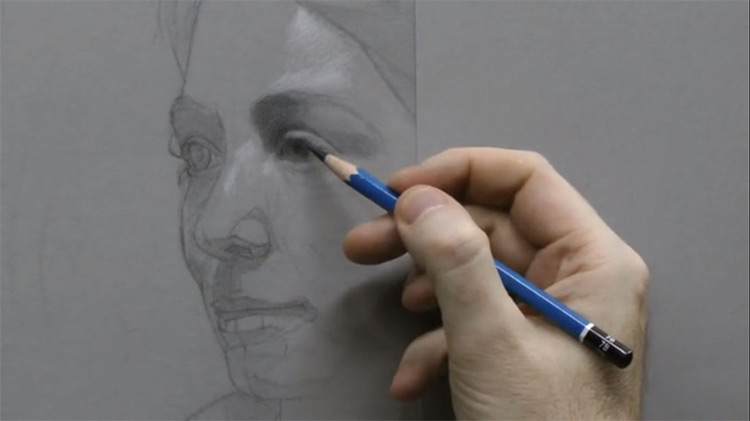
The audio quality is the same—great but not perfect. They’ve thankfully finished construction but now someone keeps entering and exiting the room.
The pacing is the same: slow and deliberate, which means that you can either draw along with it or watch it at 2x if you only want the information.
But even if nothing’s changed, I’ve been taking a bunch of Udemy courses on digital painting since the first review. Which has given me a new appreciation for Vitruvian’s production values.
There are none of the ums, ahhs, errs, oopses, and beginner mistakes to be found in cheaper tutorials.
The audio wasn’t recorded on a gaming headset.
Jamieson never draws something, then tells you “now draw that” with no explanation.
Likewise, there are none of the ill-advised goofs (sorry Proko) or clickbait you’d run into in similar videos on Youtube.
Jamieson is aware that there’s no “one drawing tip that will make you a better artist.”
Throughout the course he stresses that patience and devotion to craftsmanship over a period of years. This the only thing that will get you there, and I love that about these lessons.
Content Overview
Practically everything in the drawing fundamentals course is expanded upon here. The only new topics being the introduction of anatomy and the quirks of the human face(which are very important topics).
This one, though, is structured differently than the last.
Where Drawing Basics ran through a variety of smaller exercises, this one takes us through the process of one drawing from beginning to end.
We also get to see Jamieson’s astounding mastery of his craft in a way that wasn’t visible when he was only drawing circles and squares.
…Excuse me, spheres and cubes.
That mastery shines through in how he writes about drawing as much as in how he actually draws, too.
This is some of the most thorough art instruction I’ve seen on the internet. Every aspect is covered in sometimes overwhelming detail. Some of the articles contain enough information to require multiple readings.
Since this is one continuous lesson instead of a series of a bunch of little ones, a module-by-module breakdown won’t be necessary.
Instead I’ll provide my impressions of the full course.
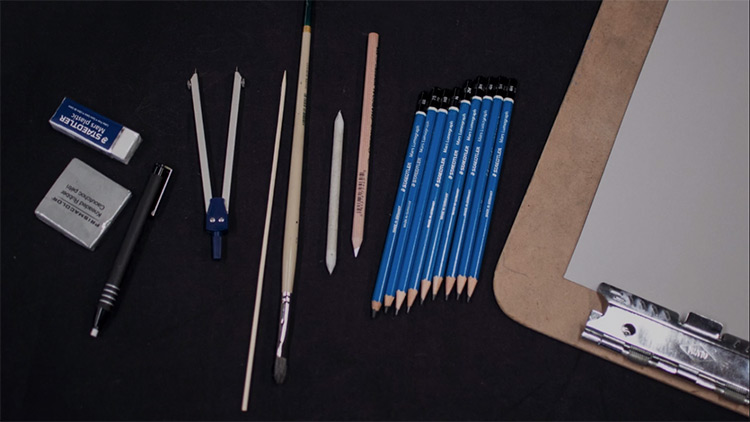
The first noticeable difference is the introduction of diagrams that boil down the content of each course. They’re available as downloadable PDF’s which I recommend you do download.
As mentioned before, it begins with an overview of some of the principles covered in Drawing Fundamentals. This includes stuff like the super helpful method of drawing curves by drawing them around angular construction lines, like a manual version of Photoshop’s pen tool.
We get a lot of the same advice on materials which can be useful if you haven’t actually taken the Drawing Basics course. But with more supplies and more nuances here, specifically in how they’ll be used.
The kneaded eraser sees a lot more action than last time as there’s a greater overall focus on precision.
I have to commend him for the unpopular but spot on advice to view your reference on a computer or tablet.
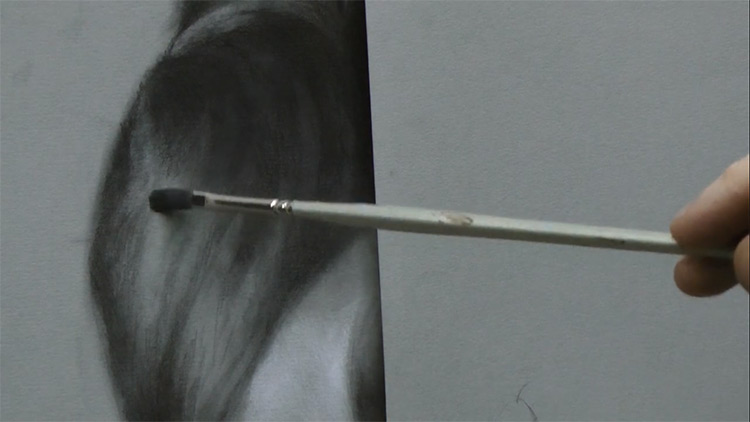
I could hear purists screaming before I typed the period on that sentence, but there’s a very good reason and he makes an excellent case for it: most consumer-grade color printers aren’t very high quality.
So you’ll get better color and value fidelity from even a low-end monitor than from most nonprofessional prints.
(Side note: he doesn’t say this, but make sure you draw from as high-resolution a source image as possible.)
There were a few techniques introduced in the last course that become much more important here.
Sighting. There’s a very long and detailed article on this one that spans two modules.
If you’re wondering, he does not use the sight-size method.
Instead he teaches you how to sight proportions yourself via observing angles and comparing the size and placement of features relative to other facial features and elements of the model: “All sighting techniques are about making comparisons,” in his words.
He also expands on the concept of triangulation using it to a much more advanced level to create accurate proportion triangles between facial features.
Block-ins are covered in much more detail than in the first course. We go establishing the center axis of the head and how it’s the foundation for placing the rest of the features.
From there we move on to construction of the head so as to gain an understanding of the whole structure instead of just copying the surface details.
This is followed by a rough but very effective guide to proportions, and a far more thorough one on laying out the face.
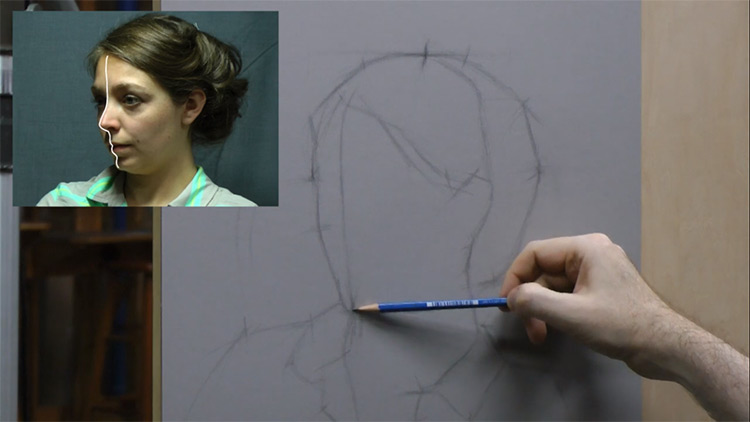
From there we get into rendering individual features… now summarizing this beat-by-beat would be pointless since it makes up the bulk of the course and it’s mostly a process of learning the muscles and bone structure of each part of the face, and then going on to describe their forms and shade them.
And I’m sure you’ve gotten the gist of the course by now.
The anatomy is on point though.
If you’ve ever wanted to learn the Latin for all of those obscure parts of the face, as well as how they work underneath the skin, all of that is laid out here.
Overall I’ve come to appreciate Jamieson’s no-nonsense style.
There are no faux-motivational clichés here. But at the same time, he’s not needlessly hard or mean the way some realist teachers can be with the misguided belief that artificial pressure will help their students improve.
He just gets to the point and tells you how to draw the thing well.
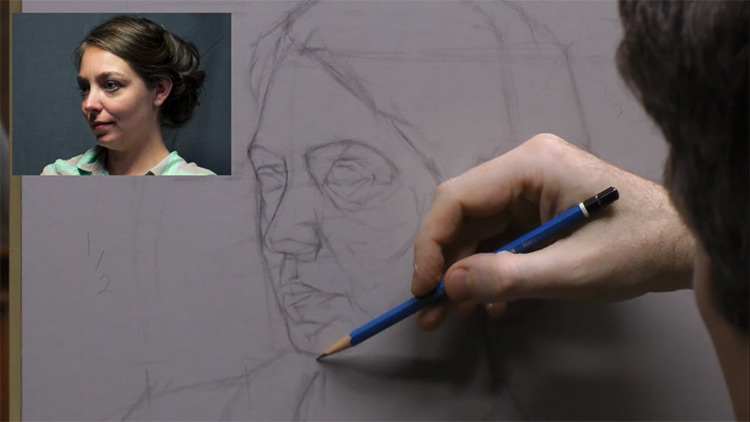
But the mindset advice he does give is some of the most useful out there, with a focus on learning craftsmanship.
As in the last course, he’s a fountain of great quotes about drawing.
Some of my favorites:
“I think of drawings as … virtual sculptures. As if while I’m drawing, what I’m really doing is … reaching into the space behind the paper … and modeling a little clay sculpture that exists in that space.”
“Don’t overestimate what materials will do for you. … Imagine that you’re a runner … You go to a track meet [and] see somebody run the hundred meters faster than you’ve ever seen in person before … Then imagine that the first question you ask is, “Oh my God, what kind of shoes are those?”
“A successful drawing needn’t be 100% ‘accurate.’ As we’ll discuss going forward, it’s more important to observe certain general relationships when trying to capture a believable likeness.”
“Drawing well requires that we establish something on the page, and then set about refining it, improving it and making it better. That’s what drawing is, fundamentally.” (Emphasis his.)
Final Wrap-Up
I wish I had more genuine criticism. The course may not help for anyone not interested in portraits, but I really couldn’t find any big flaws.
As I’ve said about the last course, this one contains techniques that you’d otherwise have to learn piecemeal from a lot of sources and study under a master, or attend to an atelier to get the info.
Even most art schools don’t teach them.
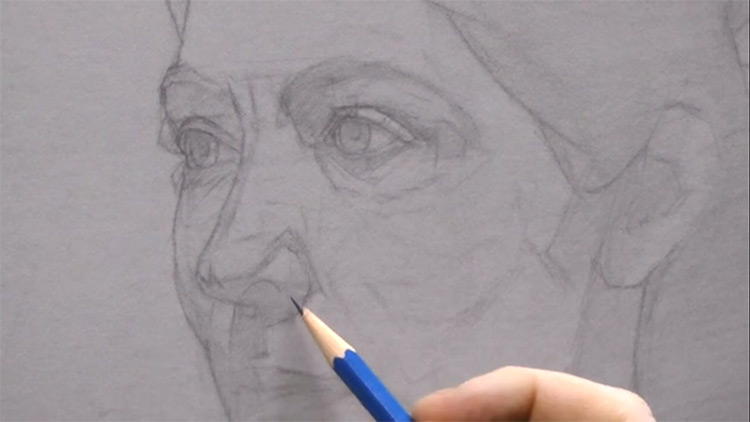
I can honestly say these two courses alone have been more helpful than any single class I’ve taken or life drawing session I’ve attended.
If you want to learn portrait drawing and have $150 to spend I’d say this is the best online course to drop it on.
And for $100 more you can purchase the Portrait Drawing Critique Extension, which at four points throughout the course will let you submit your drawings for him to critique on video, which he’ll then send back to you.
That shouldn’t be necessary but it can be useful if you really want an artist’s eye on things while working from the comfort of your home.
Still the course itself is well worth the price if you can walk away from it feeling far more confident in your portrait skills.




